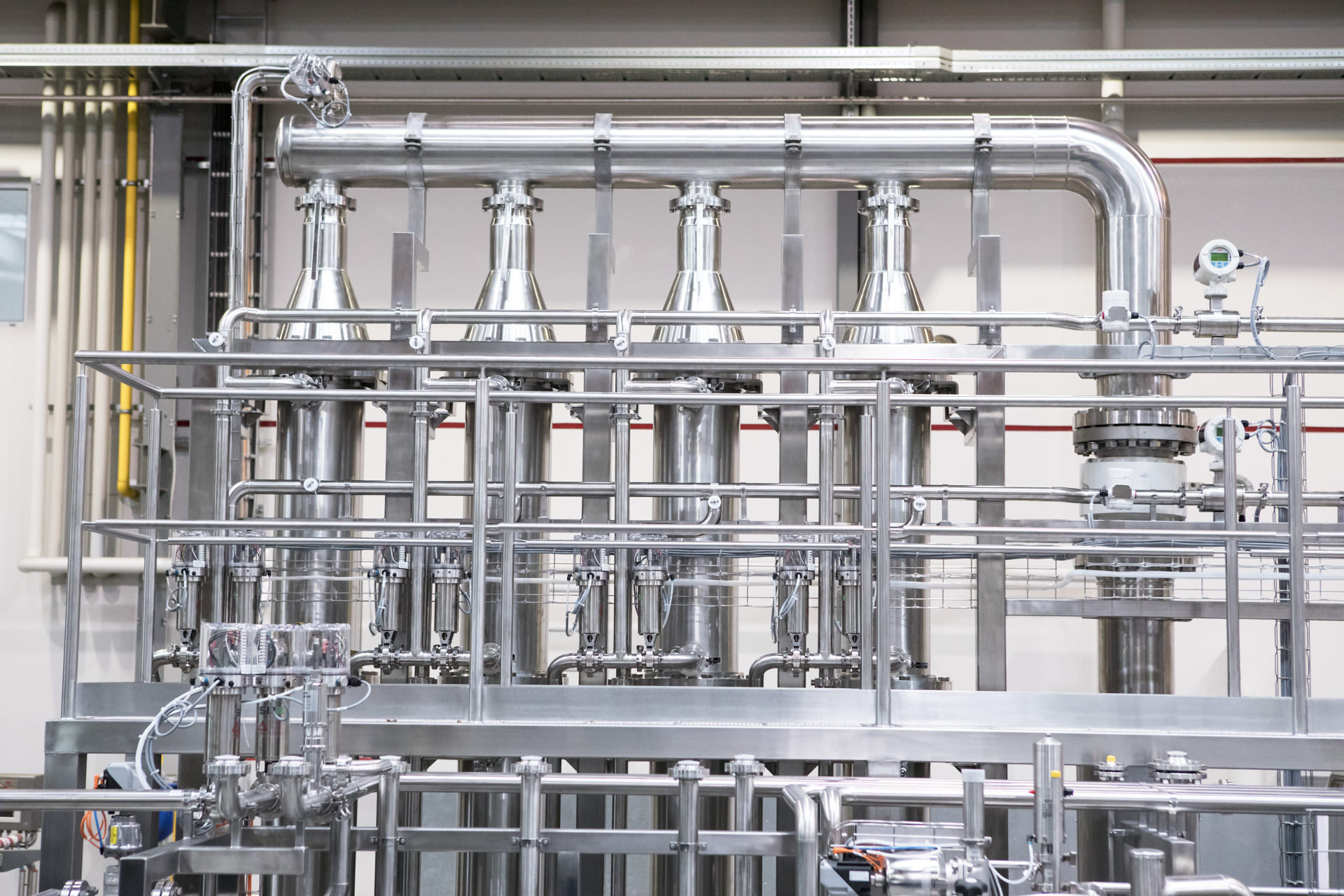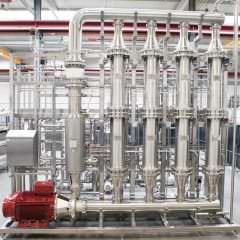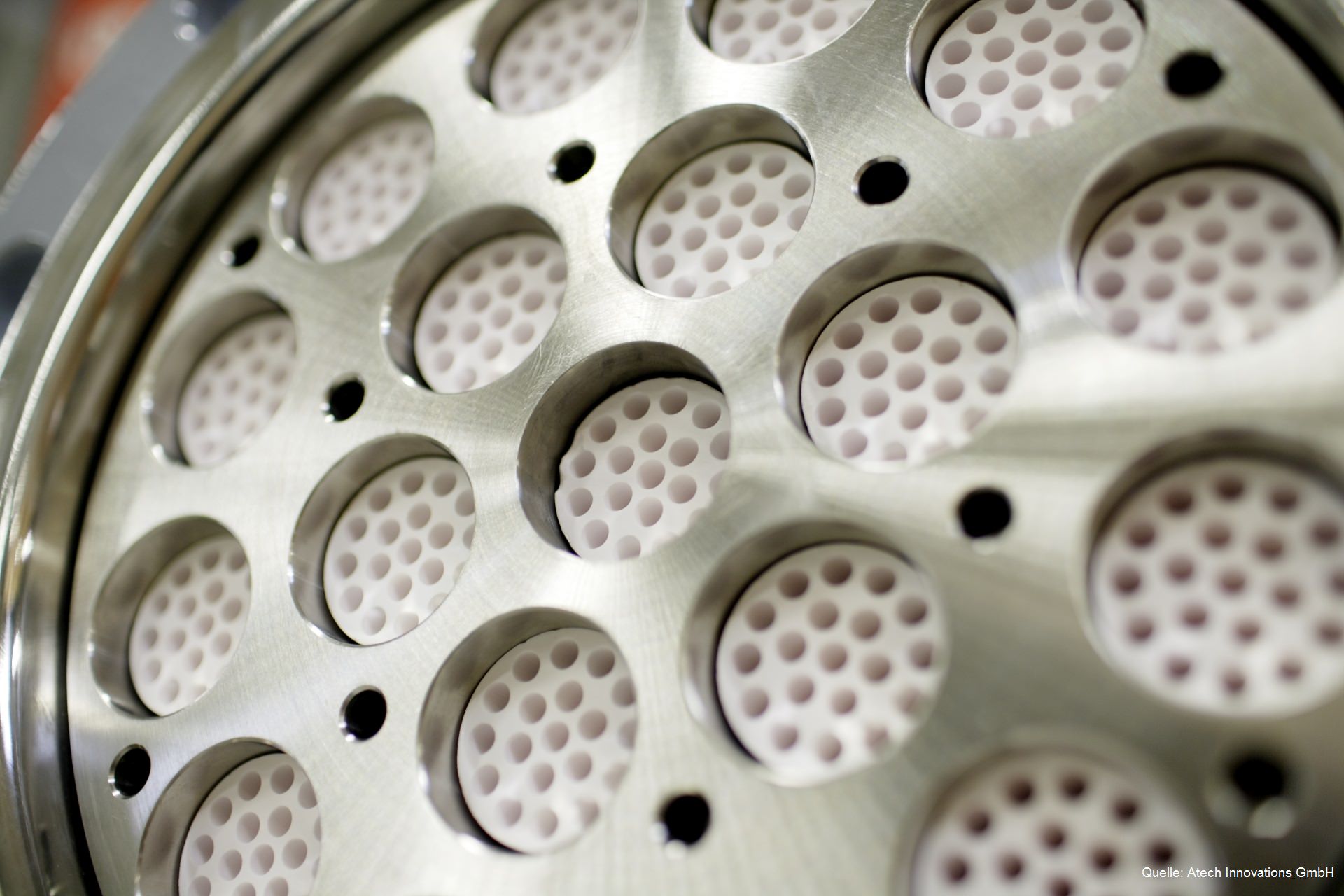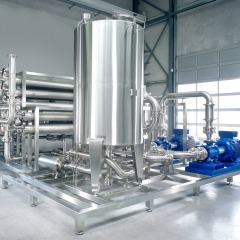
Proteinhydrolysates
Resource–efficient production and processing of proteins and proteinhydrolysates
Via innovative process engineering solutions it is possible to gain, process and refine proteins and proteinhydrolysates from plant- and animal based sources in a resource-saving way. Ruland Engineering & Consulting develops customised system components and processes for various applications:
Centrifuges / Separators / Microfiltration systems / Diafiltration plants / Ultrafiltration systems / Nanofiltration units / Cleaning systems / CIP-systems
Removal of turbid materials
Centrifuges, separators and ceramic membranes separate proteins
Specific know-how is even at the so-called pre-process needed: With the help of centrifuges and separators, the individual components of a solution (fat, water, proteins) are separated and purified. Solids and fats are getting removed. The process parameters as well as the equipment and the filters have to match perfectly with the product – at membranes the optimal pore size is significant. The pre-cleaning is one of the most important steps, as the quality of the final product depends on it.


Desalinate effectively with diafiltration
Ultrafiltration and nanofiltration
For specific products and qualities it is necessary to partly desalinate. Therefor not only ion exchangers but also membranes are used. The ultra- and nanofiltration membranes do not only eliminate monovalent and polyvalent salts but also bitterns, flavourings and odorants. An additional diafiltration stage is possible to wash even more salt out of the product.
Combine concentration and desiccation in an optimal way
For a better protein concentration
If the concentration via the membranes is not high enough, a combination with evaporation is recommended for the process. The advantage of this method is that in each case the optimal transfer point can be chosen. On the one hand, the membranes are relieved and on the other hand, the one- or multistaged evaporator can be designed to be smaller – resource-efficiency at its highest quality!

Controlled fractionation for defined chain lengths
To receive proteinhydrolysate with a well-defined spectrum of a particular chain length, the protein fragments need to be sorted according to their molecular size. Therefor an open membrane first filters the huge, long chain parts at a multistaged process, and afterwards separates the short chained proteins with the help of corresponding close membranes. Thereafter, the various chain lengths are available for miscellaneous scopes.

Filtration and cleaning
Save resources - water treatment
At processes that are intensive in water, it is important to have an effective water treatment for the process water that accrues, or to reduce the consumption in advance. Ruland is optimising the treatment with the help of suitable filter- and membrane technology. With this optimisation less waste water, that is organically loaded, reaches the treatment plant, and a recycling rate up to 80 % of the flow rate can be achieved.
Proteinhydrolysate, protein solutions
and the processes for protein treatment
Animal- and plant based proteins as well as protein hydrolysates are extracted from products like beef, pork, poultry, eggs, marine animals, dairy products or plants. The specialist does not only distinguish between the source of the proteins but also between digested, hydrolysed or not digested proteins. The amino acid that is obtained from hydrolysis or the following treatment is often used in the cosmetics or care industry or in the form of protein powder and protein bars as dietary supplement for athletes.
Proteinhydrolysate like fish-proteinhydrolysate and collagenhydrolysate consists of animal- or plant based proteins. With the help of suitable enzymes the proteins are taken to their pieces: polypeptides, peptides and amino acid.
Protein solutions in their almost unchanged form keep their functional characteristics like gelation, foam formation and water binding capacity. Such protein isolates or protein concentrates often consists of pea protein, potato protein, fish protein, gelatine or dairy products.
Comparable processes for protein processing are used at several branches to create proteins, e. g. at the production of whey protein isolate, the clarifying filtration and concentration of protein solutions, the isoelectrical precipitation via pH adjustment of protein solutions, the purification and concentration of proteins with highest pharmaceutical demands and the protein production at fermenters. The range of application for proteins of any quality is high and there are so many possibilities to process proteins that in most cases the customised solutions are more effective than standardised processes. The system only functions smoothly and efficiently if all components are optimally coordinated. For this purpose, we work closely with our customer.
Do you produce proteins and protein solutions?
Which requirement regarding the process do you have?
